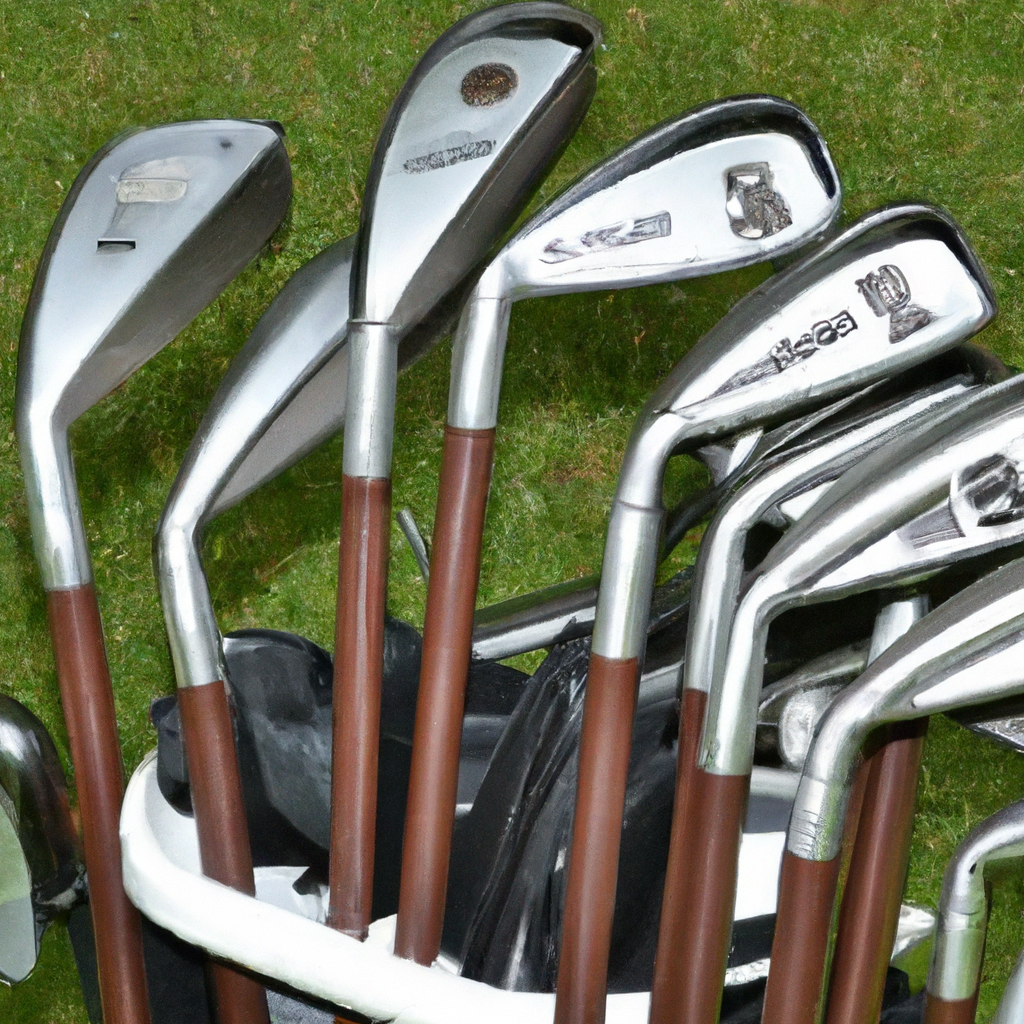We may earn money or products from the companies that may be mentioned in this post.
Have you ever found yourself wondering about the number of irons included in a standard golf set? Well, look no further! In this article, we will explore the typical number of irons found in a golf set and shed light on this commonly asked question among golf enthusiasts. So, if you’re curious to know how many irons are typically included and want to ensure you have the right equipment for your next round of golf, read on to find out all the essential details.
What is the Number of Irons in a Standard Golf Set?

Understanding Irons in Golf
Irons are a crucial component of any golfer’s arsenal. They are used for a variety of shots, including approach shots, shots from the fairway, and shots from the rough. Unlike woods, which are designed for distance, irons are created with a smaller club head and a steeper loft angle. This enables golfers to have more control over their shots and allows for precise and accurate ball striking.
Role of Irons in a Golf Set
Irons play a vital role in a golfer’s overall performance on the course. They allow players to control the trajectory and spin of their shots, providing them with the ability to shape their shots around obstacles and take advantage of different playing conditions. Irons also allow for greater control around the greens, making accurate chip shots and bunker play possible. Without a well-rounded set of irons, golfers may struggle to achieve consistent distances and shot accuracy, leading to lower scores.
Standard Golf Set Composition
A standard golf set typically consists of 8 to 10 irons, ranging from the 3-iron to the pitching wedge (PW). In addition to the irons, a player’s set may also include a sand wedge (SW) and a gap wedge (GW) to cover shorter distances and provide more options in various scenarios. With this comprehensive set of irons, golfers have the ability to tackle any situation they may encounter on the course.

Factors Influencing the Number of Irons
Several factors can influence the number of irons in a golfer’s set. One key factor is personal preference and playing style. Some players may prefer having a larger number of irons to cover a wider range of distances, while others may opt for a shorter set to simplify club selection. Additionally, a golfer’s skill level and physical abilities can also impact the number of irons they carry. Beginners may benefit from a larger set to provide more forgiveness and distance, while skilled golfers may prefer a smaller set for increased precision.
Traditional Iron Numbers
Traditionally, irons have been numbered consecutively from the 1-iron to the 9-iron, indicating the loft angle of each club. The 1-iron, with the least loft, is designed for distance and is challenging to hit due to its low trajectory. The 9-iron, on the other hand, has a higher loft angle and is used for shorter approach shots. While these traditional iron numbers are still used by some golfers, they are becoming less common as technology and club design have evolved.
Modern Iron Numbering System
In recent years, manufacturers have shifted to a more simplified iron numbering system. This system typically involves dividing irons into three categories: long irons, mid-irons, and short irons. Long irons, commonly 2 to 4, are designed for distance and are known for their higher loft angles compared to traditional long irons. Mid-irons, usually 5 to 7, strike a balance between distance and control. Short irons, encompassing 8 to pitching wedge (PW), offer increased control and accuracy for approach shots and shots around the green.
Variations in Iron Numbers
While the traditional and modern numbering systems are the most common, there can still be variations in iron numbers among different manufacturers and golf club sets. Some companies may offer additional irons such as the 2-iron or 10-iron, while others may provide a more compact set with fewer irons, excluding the longer irons. It is essential to consider these variations when selecting a golf set to ensure it aligns with your preferences and playing style.
Matching Irons to Skill Level
Choosing the right number of irons is crucial for maximizing performance on the golf course, and this decision heavily depends on a player’s skill level. Beginners and high-handicap golfers generally benefit from carrying a larger set of irons. The extra forgiveness and distance provided by a larger set allow these players to develop consistency and confidence in their game. Intermediate and low-handicap golfers, however, often prefer a smaller set to focus on precision and shot control.
Hybrids as an Alternative
In recent years, the popularity of hybrid clubs has soared, leading many golfers to consider replacing some of their long irons with these versatile alternatives. Hybrids combine the features of both irons and fairway woods, making them easier to hit and offering greater forgiveness. They excel at getting the ball airborne from difficult lies, such as in the rough or from fairway bunkers. By incorporating hybrids into their set, golfers can customize the number of irons based on their individual preferences and course conditions.
Customizing the Number of Irons
Ultimately, the number of irons in a golfer’s set is a personal decision that should be based on individual preferences, skill level, and playing style. It is important to experiment and find the right combination of irons that provides the best performance and confidence on the course. Whether you choose to stick with the traditional numbering system or opt for a modern approach, customizing your set allows you to tailor your clubs to your specific needs and ultimately improve your overall golfing experience.
